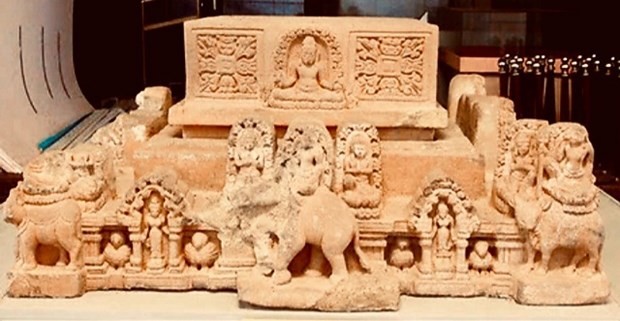
Workshop seeks measures to preserve Cham culture in Thua Thien-Hue
Latest
 |
| Van Trach Hoa altar, a national treasure, is on display at the Thua Thien Hue provincial Museum. (Photo: baothuathienhue.vn) |
Participants at the event also discussed issues related to Champa culture – an important factor in Hue’s cultural identity and typical values of Cham culture in history.
Phan Tien Dung, Chairman of the Thua Thien-Hue Association of Historical Sciences, said currently, the Champa era relics in the province are thousands of years old, eroded by the impact of nature and wars. Therefore, it is necessary to prioritise resources to preserve the remains.
Phan Thanh Hai, Director of the provincial Department of Culture and Sports, underlined the need to digitalise and well preserve documents and artifacts to promote the values of Champa cultural heritages. Localities should make plans to protect artifacts, he said.
Thua Thien-Hue expects investment from the government to build a Champa Museum, or a centre dedicated to Champa culture to promote the development of tourism and services around these cultural artifacts.
Thua Thien Hue was a part of the Champa Kingdom for nearly 12 centuries - from the 2nd to the 14th century. It is a place where cultural heritages were formed. From 1306, Chau O and Chau Ly became parts of Dai Viet. The presence of Vietnamese in this area allowed Dai Viet culture to have a great impact on the southern region. As the Vietnamese moved into this new land, they recognised the cultural significance of what they inherited and promoted the cultural achievements left by the Champa people.
There are 44 artifacts related to the Champa culture in the province. They include 17 temples and towers; three fortresses and many works such as tombs, steles and ancient wells. In particular, there are three places that were recognised as national relics, namely Lieu Coc twin towers in Huong Xuan ward, Huong Tra township; Phu Dien tower in Phu Dien commune, Phu Vang district, and Thanh Loi (Loi fortress) in Hue city.





















